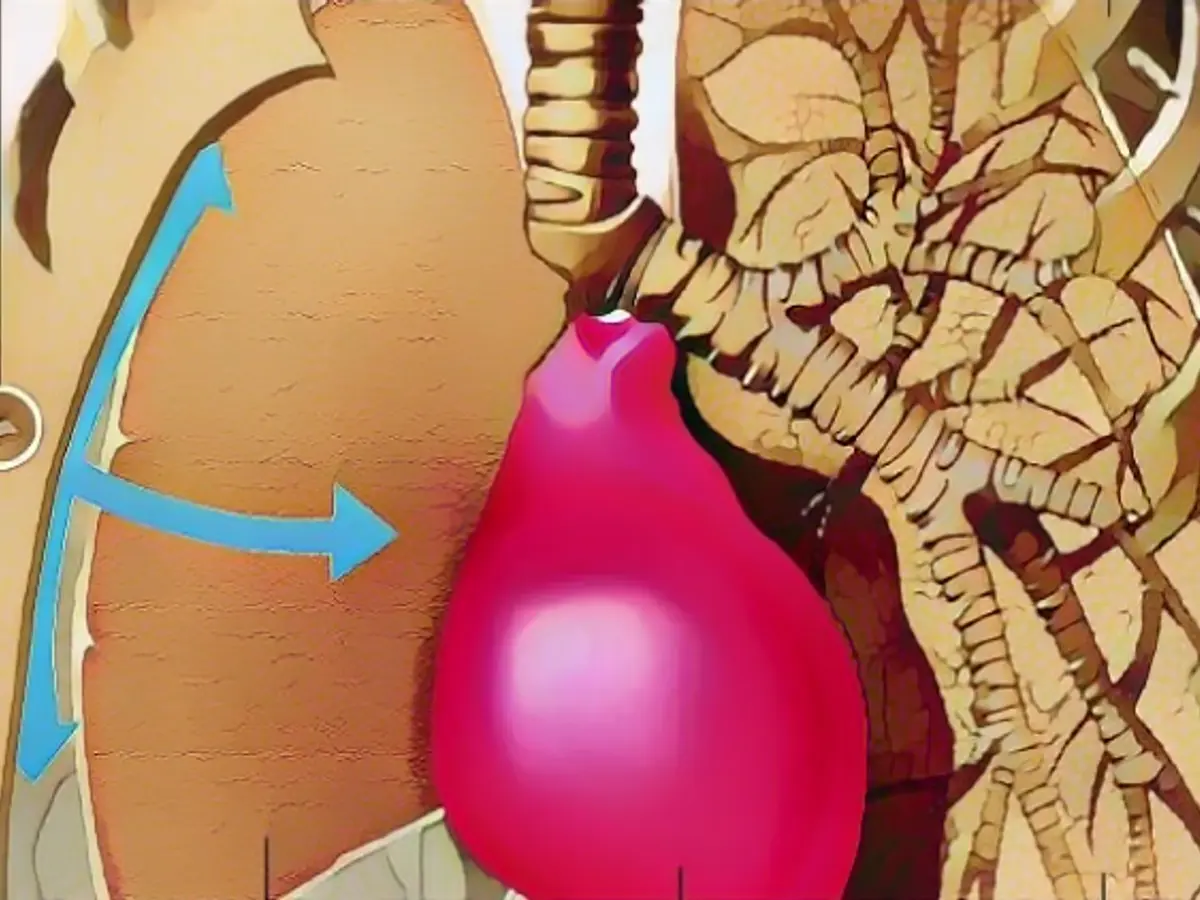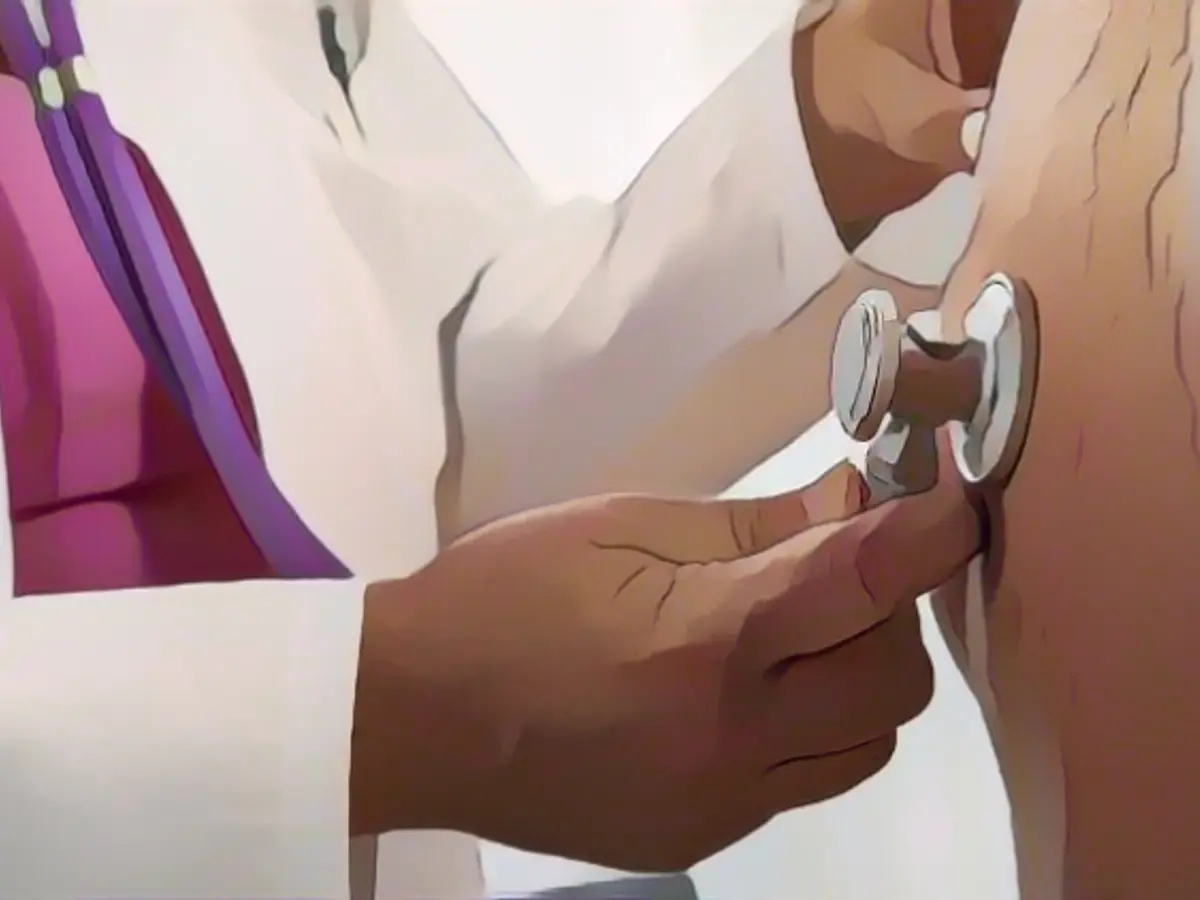Cryptic Lung Collapse in Men: The Enigma of Spontaneous Pneumothorax
Emergency room admissions due to sudden lung collapse are not unheard of, often triggered by accidents or injuries. Yet, there exists an enigmatic type of pneumothorax - the spontaneous one, which affects men significantly more often than women and leaves no traces.
The day took an unexpected turn in Berlin's summer. After weeks of shortness of breath and cough, I visited my local GP, attributing my condition to cortisone therapy, feeling reassured that everything would be fine. The doctor's expression changed as she listened to my lungs, suspicion growing in her eyes. "There's nothing there," she said, a tint of worry in her voice. The left lung was functioning as expected, but not the right. A tentative diagnosis of pneumothorax was floated.
The admit to the emergency room was swift. An X-ray confirmed her suspicions. My family doctor had, indeed, been correct. The right lung had collapsed, a possible sign of pneumothorax. A chest drain tube was inserted, helping my lung expand once more.
But what had led to this insidious lung collapse?

Air leakage into the pleural cavity, the gap between the lung and the pleura lining, can lead to the collapse. This space is usually maintained under negative pressure, but injuries, like those from a rib fracture, or suddenly bursting of air-filled blisters (blebs) can disrupt this equilibrium, causing the air to leak in and deflate the lungs.
Shaking off the initial panic, I realized there was more to this condition than met the eye. It's not unusual to have injuries as the root cause, but the spontaneous form of pneumothorax - without any visible signs or triggers - is another story altogether.
In the realm of rare yet dangerous conditions, it's this particular variety that brings chills to the spine.
Rare case of Tension Pneumothorax
In the most severe cases, the air doesn't just leak in, but gets pumped in, causing the other lung to compress. A Tension Pneumothorax is a dramatic scenario that can be life-threatening and is always treated by medical professionals even offsite.
Now, this isn't what I was dealing with. I had been experiencing acute shortness of breath, believing it to be a side effect of cortisone therapy. However, the delayed response to seek medical attention proved to be a costly mistake, as the disease could have resulted in catastrophic consequences had I waited longer.
It's a sobering reminder of the importance of timely medical intervention in such cases.
The Malady of Men
Pneumothorax affects men disproportionately more than women, with an incidence of around seven cases per 100,000 for men compared to only one or two for women. Young, tall, slim men between the ages of 18 and 35 are particularly susceptible to this condition.
Medicine struggles to provide a concrete explanation as to why this discrepancy exists. Some factors, though, are suggestive, such as the likelihood of impact trauma due to less padding in slim individuals. Furthermore, tobacco and marijuana smoking significantly increase the risk of a primary spontaneous pneumothorax.
Competition for a Cure
Spontaneous pneumothorax cannot be prevented through medication or similar interventions. Patients must learn to live with the possibility of a spontaneous lung collapse. Some may require little rest, while others might need only a few days with a chest drain. In severe cases, surgery may be necessary to eliminate the problem permanently.
This enigmatic condition continues to challenge medical professionals, with countless hours spent researching its causes and finding the best treatment options. Even after decades of studies, the causes remain unclear, leaving doctors to explore potential connections that may not surface for years to come.
Following my diagnosis of pneumothorax, I embarked on a journey to better understand the condition and its relationship to past health issues. My past association with tuberculosis raised concerns over its potential impact on the development and recurrence of pneumothorax.
Additionally, research revealed that medication helps manage pain and complications associated with Tension Pneumothorax. In my case, I was administered painkillers to ease the discomfort caused by the chest drain. However, the most effective treatment remains timely and appropriate medical interventions, whether in-hospital or on-site.
Source:
Enrichment Data:
The enigma of spontaneous pneumothorax continues to perplex medical professionals as they search for answers. Some key factors may be contributing to the condition:
- Blebs and Bullae: Spontaneous pneumothorax is often linked to the rupture of subpleural blebs or bullae on the lung surface. These subpleural blebs are fragile, air-filled cysts that may rupture spontaneously, causing air accumulation in the pleural space.
- Smoking and Marijuana: Smoking and marijuana use significantly increase the risk of a spontaneous pneumothorax, as both substances can weaken the lung tissue and increase the likelihood of bleb rupture.
- Low Body Mass Index (BMI): Individuals with a low BMI are more susceptible to spontaneous pneumothorax, with tall, slender men being particularly vulnerable.
- Large Pneumothorax Size: Larger pneumothoraces are more likely to recur, making it essential to monitor the progression of the condition closely to prevent future complications.
- Presence of Subpleural Blebs in CT Scans: The presence of these blebs can help predict the likelihood of spontaneous pneumothorax, aiding medical professionals in identifying patients who may benefit from preventative measures.
- Demographic Factors: Spontaneous pneumothorax predominantly affects men between the ages of 15 and 35, underscoring the need for targeted research and intervention strategies.
By pinpointing these contributing factors, medical professionals may be one step closer to finding solutions that will help prevent and manage this enigmatic and unpredictable condition.








